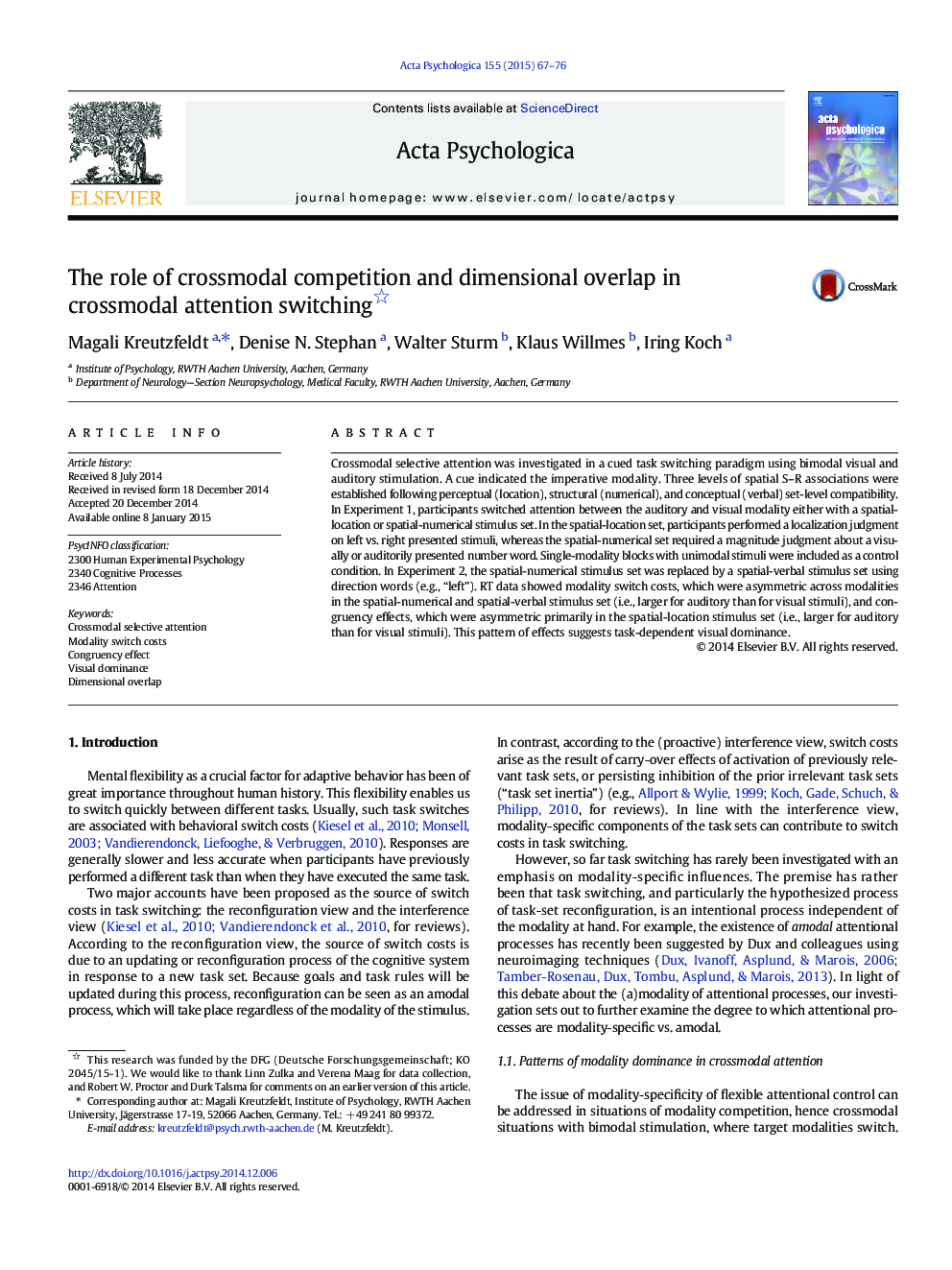| Article ID | Journal | Published Year | Pages | File Type |
|---|---|---|---|---|
| 7277518 | Acta Psychologica | 2015 | 10 Pages |
Abstract
Crossmodal selective attention was investigated in a cued task switching paradigm using bimodal visual and auditory stimulation. A cue indicated the imperative modality. Three levels of spatial S-R associations were established following perceptual (location), structural (numerical), and conceptual (verbal) set-level compatibility. In Experiment 1, participants switched attention between the auditory and visual modality either with a spatial-location or spatial-numerical stimulus set. In the spatial-location set, participants performed a localization judgment on left vs. right presented stimuli, whereas the spatial-numerical set required a magnitude judgment about a visually or auditorily presented number word. Single-modality blocks with unimodal stimuli were included as a control condition. In Experiment 2, the spatial-numerical stimulus set was replaced by a spatial-verbal stimulus set using direction words (e.g., “left”). RT data showed modality switch costs, which were asymmetric across modalities in the spatial-numerical and spatial-verbal stimulus set (i.e., larger for auditory than for visual stimuli), and congruency effects, which were asymmetric primarily in the spatial-location stimulus set (i.e., larger for auditory than for visual stimuli). This pattern of effects suggests task-dependent visual dominance.
Keywords
Related Topics
Life Sciences
Neuroscience
Cognitive Neuroscience
Authors
Magali Kreutzfeldt, Denise N. Stephan, Walter Sturm, Klaus Willmes, Iring Koch,
